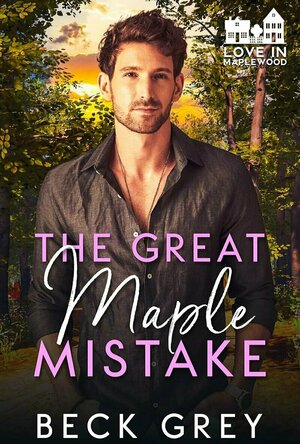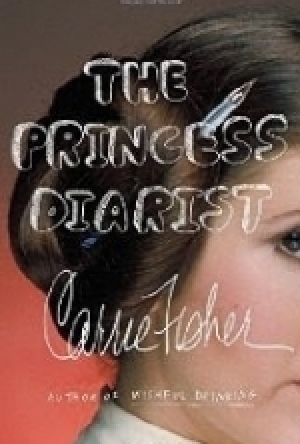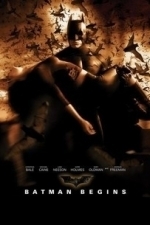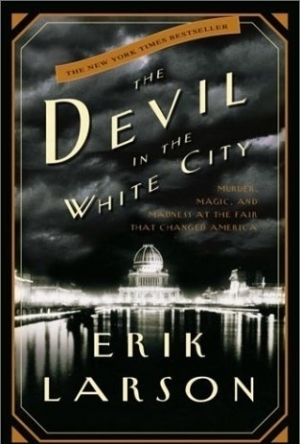
myPill® Birth Control Reminder
Medical and Health & Fitness
App
It makes sure you'll NEVER miss a pill ever again. With myPill® you can truly be free of worries....

Dark Prophecy: A Box Set
Book
The Dark Prophecy series – a box set Sacred Talisman After roaming the earth for five...
Adult Paranormal Romance Ménage
Kristy H (1252 KP) rated The Princess Diarist in Books
Feb 8, 2018
I am new to the <i>Star Wars</i> fandom, having only recently discovered the films myself in the past two years or so. My four-year-old daughters love them (and Leia), so I was intrigued by the idea of Fisher's memoir. While I like the films, I don't consider myself a fanatic by any stretch of the imagination. Still, I was interested in hearing some behind the scenes tidbits about filming. And Fisher starts out with such facts, explaining how an early scene was re-written due to the physical limitations of Peter Mayhew, who played Chewbacca. It's that sort of information that I find fascinating--and imagine other <i>Star Wars</i> fans would as well.
And, I won't lie, I was also fascinated by Fisher's reported relationship with Harrison Ford, who is about 15 years her senior (and was married while they were filming). Her portrayal of Harrison in the book seems spot on and is actually quite humorous at times. Unfortunately, her actual detail of the relationship is scant at best, and we really don't get much insight into their romance. What we do get is a lot of particulars about Fisher's own insecurities about herself, her body, her acting, etc.
She includes actual excerpts of the journals she found in the middle of the book, and I confess, I eventually started skimming them, because they were just agony to read. I can understand how they resonate from the perspective of a lovestruck teenager (because, truly, she was just that at the time), but so many years later, they just seem like a lot of bad poetry and ramblings that make no sense out of context. And beyond a few stories about Harrison, we really get nothing in the book that explains them, which is unfortunate, as Fisher seems witty and interesting (albeit insecure, but hey, so am I). I understand her angst from the journals, I really do, but I'm not honestly sure I wanted to read it in such form.
Plus, after that section of the book, we move on to Fisher discussing her fans and how "being Leia" has affected her life. And, again, I get it: we all forget how no one expected <i>Star Wars</i> to be so big. You wouldn't at nineteen realize what you were getting into, and I'm sure this character has absorbed much of her identity. And maybe it was reading this on the heel of Anna Kendrick's memoir, but I can only take so much of celebrities complaining about their fame and lives. The second half of Fisher's book, basically, is her capturing "conversations" with awestruck fans explaining how much Leia and <i>Star Wars</i> meant to them. But, really, it's mocking them and illustrating how tiresome the "lap dance" (her words) of signing autographs and appearing at various conventions can be. But, you know, as she states, it's worth it for the money. You can't help but feel a little offended on the part of these devoted, crazy fans, and a little less sorry for Fisher, even if she was not included on merchandising shares for <i>Star Wars</i>.
Sigh. Overall, I'm a bit conflicted on this one. Bits and pieces were very interesting. But I would have enjoyed hearing more about the actual set and her interactions with the other actors beyond Harrison Ford. While I also didn't mind hearing about Fisher's impressions of how Leia impacted her life, the fandom sections just rubbed me the wrong way. 2.5 stars.
Gareth von Kallenbach (980 KP) rated Batman Begins (2005) in Movies
Aug 14, 2019
The act will forever scar the younger Wayne, and will install and fuel a dark fire to stop crime and corruption wherever they may be. Fast forward years later and Bruce (Christian Bale), is interned in and Asian prison as a result of his desire to stop crime and an unfortunate series of events that made him flee Gotham City to find himself. Hope arrives one day in the form of a visitor named Henri Ducard (Liam Neeson), who arranges not only to free Bruce, but to train him for his destiny.
High atop a rocky, snow-covered peak, Bruce undergoes rigorous physical and mental training to hone his body and mind into the ultimate tool to combat crime. As time passes, Bruce eventually is ready to go out into the world. That is until an unexpected situation arises that forces him to decide which path he wishes to select.
The aftermath of this decision has Bruce returning home to Gotham City, where he is again under the care of the trusted family servant Alfred (Michael Caine), who informs him that crime and corruption is rampant in Gotham because the crime leader Carmine Falcone (Tom Wilkinson), has many members of the police force and judicial system under his influence.
While touring his father’s company, Bruce meets Lucius Fox (Morgan Freeman), who makes all manners of high-end experimental military weaponry and armor available to Bruce. Inspired, Bruce begins to craft his alter ego Batman, and takes to the nights to disrupt Falcone and the criminal activities in Gotham.
Unknown to Bruce/Batman, an evil villain known as the Scarecrow (Cillian Murphy), is plotting to destroy Gotham, and with Batman being wanted by the police as a vigilante his attempts to cleanse the city are hindered as Bruce/Batman must fight a war on different fronts.
For most films this would be more than enough plot to carry a summer action film, but for Batman Begins, it is only the setup as the depth of the story is surpassed only by the depth of the intensity and emotion of the film as this is not Tim Burton or Joel Schumacher’s campy takes on the tale of the Dark Knight.
Director Christopher Nolan takes the gloves off and shows that his triumphant work in “Memento” was not a fluke. He has crafted a complex, dark, and emotional film that is more of a drama than a comic book caper. Bale does a masterful job portraying the angst and anger of his character without ever being hammy or over the top. He portrays Wayne as a very normal, yet disturbed soul, who clearly has a method to his madness and is not a shallow once dimensional character. When Bruce is not out fighting crime, he is not above cracking jokes, squiring the ladies about town, and spending time with long time friend (and the one who got away) Rachael Dawes (Katie Holmes).
The film takes many twists and never gets sappy as far too many comic based films do. In fact, the intensity of the film keeps going up until the town literally explodes into frenzy of violence and chaos. Parents should note that this Batman is a very intense film filled with dark images and as such may be too intense for younger viewers as this is a film that is aimed towards a more mature audience.
As I sat through the films nearly two and a half hour running time, I was captivated as the film holds your attention throughout, and is filled with great performances and action. The chase scene with the new Batmobile is one of the best car chase sequences in recent memory and the action scenes move with a crisp and steady pacing. Bale, as I mentioned, does great work, but so do Neeson, Caine and Gary Oldman in a supporting role as Police Officer Gordon. They take supporting characters and infuse them with a touch of humanity that enables them to come across as real people rather than the thin constructs that are far too often passed on as characters in films of this type.
The only real quibble I had with the film, and it is very minor, would be that Holmes was not given a chance to show more to her character other than the duality of the damsel in distress and the passionate Assistant D.A. Her scenes with Bale seem to lack the spark and chemistry of someone who is supposed to have been a close friend of Bruce since they were children.
That being said, the mature nature and gripping and deep storyline, as well as the standout performances and action, make this film a true classic and rivals “Spider-Man” as the best and most faithful adaptation of a comic book.

The Great Maple Mistake (Love in Maplewood #8)
Book
A small-town photographer who’s given up on love meets a smoking hot firefighter with a smile to...
Contemporary MM Romance

Mindfulness Daily
Health & Fitness and Lifestyle
App
Mindfulness is simple and proven effective; yet it is not always easy to find time to practice when...

10K Pacer: Run pace training. Run faster
Health & Fitness and Lifestyle
App
Improve your 10K pace and burn more calories. This is an 8 week program that combines running and...

5K Pacer: Run pace training, Run faster
Health & Fitness and Lifestyle
App
Improve your 5K pace and burn calories. This Is an 8 week program that combines running and speed...
Hadley (567 KP) rated The Devil in the White City: Murder, Magic, and Madness in Books
Jan 18, 2021
He's been a doctor and a licensed pharmacist, who then conned an old couple into selling their drug store to him where he preyed on young girls and ignorant customers that would buy whatever Holmes would tell them to buy, whether it were real or fake tonics.
He was a building owner who had a murder hotel secretly built with " a wooden chute that would descend from a secret location on the second floor all the way to the basement... ", "a room next to his office fitted with a large walk-in vault, with airtight seams and asbestos-coated iron walls. A gas jet embedded in one wall would be controlled from his closet...", "a large basement with hidden chambers and a sub-basement for the permanent storage of sensitive material. "
He owned and ran an alcohol-treatment company known as the Silver Ash Institute that claimed to have the cure for alcoholism.
He was a traveling business man, who had two wives and two children. He established the Campbell-Yates Manufacturing Company, which made nothing and sold nothing.
He was also labeled as America's first serial killer. His body count is unknown even today; his victims were frequently young women, which included stenographers and house wives. He was best known for convincing people who trusted him to sign him as the beneficiary of their life insurance policies, only to kill them and make it seem an accident so he could collect the money.
Holmes grew up in a small farming village in New Hampshire, where he briefly spoke about an early fear of a human skeleton that hung in a doctor's office: " 'I had daily to pass the office of one village doctor, the door of which was seldom if ever barred,' he wrote in a later memoir. 'Partly from its being associated in my mind as the source of all the nauseous mixtures that had been my childish terror (for this was before the day of children's medicines), and partly because of vague rumors I had heard regarding its contents, this place was one of peculiar abhorrence to me.' "... "Two children discovered Mudgett's [Holmes' real last name] fear and one day captured him and dragged him 'struggling and shrieking' into the doctor's office. 'Nor did they desist,' Mudgett wrote, 'until I had been brought face to face with one of its grinning skeletons, which, with arms outstretched, seemed ready in its turn to seize me. It was a wicked and dangerous thing to do to a child of tender years and health,' he wrote, ' but it proved an heroic method of treatment, destined ultimately to cure me of my fears, and to inculcate in me, first, a strong feeling of curiosity, and, later, a desire to learn, which resulted years afterwards in my adopting medicine as a profession.' "
Erik Larson's fourth book, the Devil in the White City, is only partly about Holmes and his dark trail of murder and lies. The story told is mostly centered around the planning and building of the 1893 World's Fair. The prologue opens with one of the architects aboard a ship long after the fair has ended - - - 1912 to be exact- - - where he begins to write of the fair in his diary. The next chapter continues on with Chicago competing against other major cities to win the rights to host the World's Fair. Chicago was not the ideal place for the fair because it was known for it's crime and slaughter houses - - - this was exactly why the politicians wanted it so badly there, so it would help to lighten the image of Chicago for the rest of the world. Even the local Whitechapel Club that had sprouted up after the infamous murders by Jack the Ripper, were excited to win the rights to host the fair in their city, and celebrated in a macabre way:
"Upon learning that Chicago had won the fair, the men of the Whitechapel Club composed a telegram to Chauncey Depew, who more than any other man symbolized New York and its campaign to win the fair. Previously Depew had promised the members of the Whitechapel Club that if Chicago prevailed he would present himself at the club's next meeting, to be hacked apart by the Ripper himself - - - metaphorically, he presumed, although at the Whitechapel Club could one ever be certain? The club's coffin, for example, had once been used to transport the body of a member who had committed suicide. After claiming his body, the club hauled it to the Indiana Dunes on Lake Michigan, where members erected an immense pyre. They placed the body on top, then set it alight. Carrying torches and wearing black hooded robes, they circled the fire singing hymns to the dead between sips of whiskey. The club also had a custom of sending robed members to kidnap visiting celebrities and steal them away in a black coach with covered windows, all without saying a word.
The club's telegram reached Depew in Washington twenty minutes after the final ballot, just as Chicago's congressional delegation began celebrating at the Willard Hotel near the White House. The telegram asked, 'When may we see you at our dissecting table?' "
There are chapters in-between, technically reading like a side story, that tell us about Holmes and his misdeeds in Chicago, but there just wasn't enough about Holmes that I could consider this a True Crime book, nor an informative book about Holmes. Unfortunately, when the reader begins to really dwell into the story of Holmes, it's quickly ended by having two or more chapters about the building of the World's Fair. One interesting point about the story is that the reader does get to see how many inventions were brought to light because of the Fair, such as the invention of the Ferris Wheel. Larson's writing is very coherent and the descriptions are so well done that the reader is practically transported back to the late 1800s, yet, before I finished the book, I felt misled by the title... then coming across everything that happened to not only the Fair, but the people who were involved with it, it's hard not to wonder if the whole thing was cursed, thus the Devil being in the White City.
One of the side stories I did really enjoy was the slow unfolding of a man named Prendergast. A delusional young man who ran one of the groups of paperboys in Chicago, who was also obsessed with politics, became a determined supporter of Mayor Harrison; after Harrison was voted into office again, Prendergast believed it was because of him and the letters he sent out to numerous politicians and potential voters. Prendergast also believed he deserved a chair on the council for Harrison's re-election, for which he even showed up at City Hall to take over. This incident was the straw that broke the camel's back for Prendergast - - - he was humiliated when the people there laughed in his face. Prendergast then decided to take matters into his own hands, and bought a revolver. The day before the Fair would end, Prendergast showed up at Harrison's home and shot him. Harrison died minutes later. Prendergast turned himself in for the murder as soon as he left Harrison's residence. When asked why he had done it, Prendergast responded: " ' Because he betrayed my confidence. I supported him through his campaign and he promised to appoint me corporation counsel. He didn't live up to his word.' "
This book has been voted as a top True Crime must-read novel. I don't agree with this. As I said before: Holmes' chapters are few; eighty percent of this book is about the building of the World's Fair. As a True Crime junkie, I didn't enjoy this one, but also as a history junkie, I enjoyed learning about the Fair and everything that happened. I can't recommend this book to TC fans or horror fans. It's mostly history and architecture.

My Macros+ Diet, Weight and Calorie Tracker
Health & Fitness and Lifestyle
App
My Macros+ is the only diet tracking app made by a fitness professional! We are proud to bring you...


